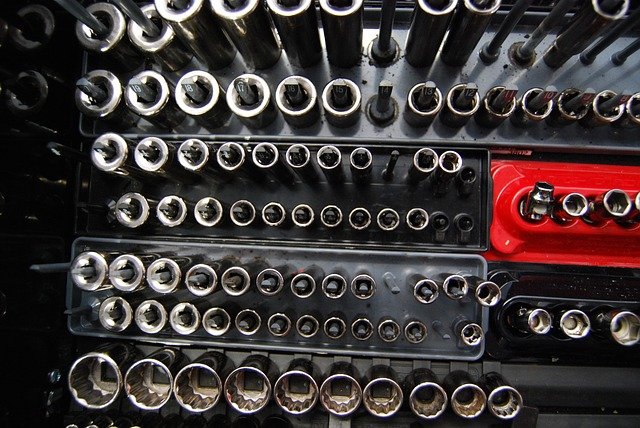Your socket set will work best when it fits precisely onto the nut, bolt or fastener you are trying to fasten or loosen; it is a no brainer!
Knowing the types and sizes of the nuts and bolts you will most likely encounter is an easy way to ensure that you have the right fasteners. With this information, you can choose the right socket set or a combination of socket sets for you.
Now, the question is which is the better socket – the 6-point one or the 12-point one? Before we delve into that, let us understand what the above-mentioned sockets are and their differences.
Six-point socket vs. 12-point pocket
- A 6-point socket, as the name suggests, has six points or vertices which are evenly set at 60 degrees around a circle. The 6-point socket end is hexagonal in shape.
- A 12-point socket, on the other hand, has 12 points or vertices which are evenly set at 30 degrees around a circle. The 12-point socket end is a double-hexagon and is also known as a double-hex. You can also fit a 6-point nut or bolt onto a 12-point socket.
If you are dealing with lighter jobs or DIY projects, a 12-point socket would be a perfect choice. However, for heavy wrenching jobs, a six-point socket is better suited. There are fewer chances for a 6-point socket to slip off and wear the corners of the fasteners. This is because a 6-point socket has a thicker wall and the contact between the socket head and fastener is made on the thickest part. This reduces the chances of the socket slipping away and increases the torque performance. Also, due to the 60-degree angle, the edges of a socket are angled back to allow the socket to slide easily over a fastener and provide more contact area inside the socket that the 30-degree angle of the 12-point socket.
As 12-point sockets can be used on both hexagonal and double hexagon fasteners they are more versatile. Moreover, 12-point sockets are ideal for work in confined spaces. Due to the reduced surface contact between 12-point sockets and fasteners, there is a greater risk of stripping bolts, especially in applications requiring a large amount of force.
Six-point fasteners tend to work better in situations requiring a large amount of force, though you can use both types of fasteners interchangeably. In this case, there is a lesser risk of bolt head stripping due to their greater wear resistance.
In a nutshell, if you are working in confined spaces and will not need a lot of force, choose a 12-point socket as it works well in small spaces. This is because it allows you to connect to a fastener at more angles. However, they are not suited to high-impact applications due to the increased risk of stripping the fastener head. Though 6-point sockets are appropriate for high-impact applications they cannot be used on 12-point nuts and bolts.
Also read: What To Know About Storage Servers
If you need help finding the right socket set for your project, visit RS Components and browse to take a look at all the high-quality brands available.
